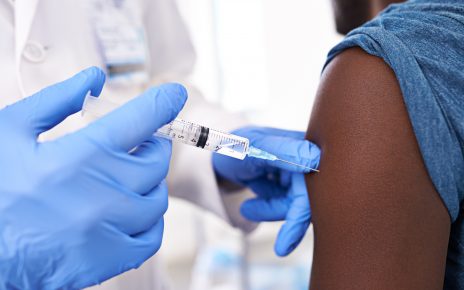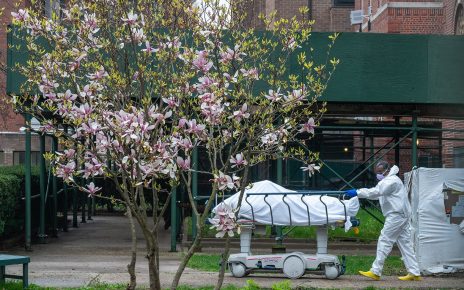Instead of thinking about whether to vote Democratic or Republican in the upcoming U.S. election, think about voting to protect science instead of destroying it.
As president, Donald Trump’s abuse of science has been wanton and dangerous. It has also been well documented. Since the November 2016 election, Columbia Law School has maintained a Silencing Science Tracker that records the Trump Administration’s attempts to restrict or prohibit scientific research, to undermine science education or discussion, or to obstruct the publication or use of scientific information. By early October, the tracker had detailed more than 450 cases, including scientific bias and misrepresentation (123 instances), budget cuts (72), government censorship (145), interference with education (46), personnel changes (61), research hindrances (43) and suppression or distortion of information (19).
The Union of Concerned Scientists (UCS) also keeps a tracker of the administration’s attacks on science. It details antiscience rules, regulations and orders; censorship; politicization of grants and funding; restrictions on conference attendance; rollbacks of data collection or data accessibility; sidelining of science advisory committees; and studies that have been halted, edited or suppressed. The fact that so many types of abuse have occurred, and so often that they each warrant their own category, is scary.
Alarmingly, many of the attacks involve the most immediate and long-term threats to people on earth: the COVID-19 pandemic and climate change. In September, for example, Politico reported that Trump’s political appointees in the Department of Health and Human Services were editing weekly reports from the Centers for Disease Control and Prevention (CDC) about the pandemic prior to publication. Ten days later, U.S. Secretary of Energy Dan Brouillette asserted that “no one knows” whether human activities are causing climate change—a refrain that is so tired it has become silly.
Such declarations parrot Trump’s own words and actions. As was widely reported, when the president was touring the California wildfires in mid-September and was asked about the role of climate change, he said, “It’ll just start getting cooler, you just watch.” Wade Crowfoot, California’s secretary for natural resources, replied, “I wish science agreed with you.” To which Trump retorted: “Well, I don’t think science knows, actually.”
Moves by Trump Administration officials to block or alter scientific information have been particularly egregious. In 2016 National Park Service leaders deleted language about climate change in a report done by an agency scientist, Maria Caffrey. She filed a whistleblower complaint, the language was reinstated—and later she was terminated. In May 2019 the U.S. Geological Survey director ordered employees to use climate change models that only project impacts through 2040, cutting off consideration of severe consequences that are likely in the years beyond.
In June 2019 Politico reported that Department of Agriculture officials buried dozens of climate change studies, including one that revealed how rice worldwide growing in an atmosphere with more carbon dioxide would provide less nutrition. The next month, a State Department scientist resigned after the White House blocked him from submitting written testimony to the House Intelligence Committee on the national security dangers of climate change.
In July 2020 the nonpartisan Government Accountability Office revealed how the Trump administration artificially lowered estimates of climate damages to justify weakened climate policies, failing to listen to experts from the National Academies of Sciences, Engineering and Medicine.
Undercutting science has dangerous repercussions. New York Times contributor David Leonhardt, analyzing COVID-19 data from the World Bank and Johns Hopkins University, found that as of September 1, if the U.S. had the same rate of COVID-19 deaths as the world average, 145,000 fewer Americans would have died from the disease.
Trump’s dismissal of medical science is one reason for the awful excess. As Ben Santer, a researcher at the Lawrence Livermore National Laboratory and a member of the National Academies, wrote in a Scientific American article in June: “It was scientifically incorrect for Donald Trump to dismiss the coronavirus as no worse than the seasonal flu, as he did on February 26. It was incorrect to advise U.S. citizens to engage in business as usual, which he did as late as March 10. It was incorrect to imply, as he did in a press briefing on March 19, that the malaria drugs hydroxychloroquine and chloroquine are promising remedies for COVID-19.” (There was already evidence that the medications did not help, and additional findings soon led the U.S. Food and Drug Administration to revoke authorization for their use.) “Dissemination of such inaccurate information helped to spread the novel coronavirus in America faster by delaying the adoption of social distancing.”
Even after Trump became ill with COVID, he continued to mislead the public about the danger of the illness and the safety and efficacy of the experimental treatments he received.
The administration has also been “suppressing CDC reports on how to safely operate businesses, schools and houses of worship during the pandemic,” according to UCS research analyst Anita Desikan, in an August blog post on the organization’s Web site.
Disregard for science threatens people in other ways. Desikan noted that the EPA has discounted the human health effects of particulate air pollution, which numerous studies show contributes to asthma, lung damage and birth defects, and has ignored the dangers of asbestos, a known human carcinogen, raised by its own scientists. The EPA, she noted, has even downplayed harm from a chemical that damages the hearts of human fetuses. EPA’s leaders, appointed by Trump, have rolled back numerous regulations affecting endangered species, clean air, clean water and toxic chemicals—even the neurotoxin mercury—which will increase hazards to human health as well as emissions of greenhouse gases. These threats are particularly important for Black, Latinx and Indigenous communities, which suffer disproportionately from pollution as well as COVID-19.
Science, built on facts and evidence-based analysis, is fundamental to a safe and fair America. Upholding science is not a Democratic or Republican issue. There are plenty of people in red and blue states across the country who respect and need science. Industrial innovation, profitable farming, homeland security, a competitive economy and therefore good jobs, all depend on it. But politicians of different stripes have to get on board to protect science from further demise. In May, for example, the U.S. House of Representatives passed the Scientific Integrity Act as part of the Heroes Act. It would require science-based federal agencies to have a scientific integrity policy that ensures that no one at the agency will “suppress, alter, interfere, or otherwise impede the timely release and communication of scientific or technical findings.” But the bill sits idle in the Senate.
On an individual basis, the most powerful action you can take to protect science is to vote out of office a president who is trying to gut it—and to encourage people you know to do likewise, especially in the battleground states. The same applies to the November elections for key U.S. Senate races. Most senators and representatives do prize facts and evidence-based thinking, yet too many of them remain silent about Trump’s abuse of science. Their silence is complicity. For that reason, the November 3 election should be a day of reckoning.



